Business
Discover Affordable Transatlantic Flights: Why U.S.-Europe Travel is Cheaper Than Ever
Published
4 months agoon

Flights between the U.S. and Europe have become more affordable than they’ve been in years, with significant drops in fares even during traditionally slower travel months like late fall and winter. This price dip, combined with low-cost airlines offering budget-friendly options, is making travel to Europe more accessible than ever before.
One major reason for this trend is a recent increase in transatlantic flights as airlines work to meet high post-pandemic demand. Carriers have expanded schedules not only during peak summer months but also in the off-season. More flight availability and a focus on cheaper fares have been essential in keeping costs down, even with fewer travelers.
In November, “good deal” fares to Europe are averaging around $578, a reduction from last year’s $619, according to Hopper. Early 2025 fares look even better, with January flights priced at around $558, a notable drop from previous years. This means travelers can look forward to affordable transatlantic flights well into the coming months.
However, domestic U.S. flights are telling a different story. With less competition among carriers in many areas, domestic fares are higher in comparison, as airlines have cut flights or adjusted growth plans to stabilize revenue. Some major airlines, including Delta and United, have emphasized that the week surrounding the U.S. presidential election and certain holiday periods see fewer bookings, leading to firmer prices domestically.
Airlines Boost Service to Europe and Unique Destinations
To meet the steady demand for Europe travel, especially outside of peak months, airlines are adding unique destinations beyond the typical European hotspots. United Airlines, for example, plans to expand its offerings to include off-beaten-path locations like Greenland and Mongolia, aiming to capture interest from travelers who want something different. This shift means more options and potentially lower costs, giving travelers affordable transatlantic flights that can match their adventurous spirit.
Low-Cost Airlines Maintain Accessibility
The expansion of low-cost airlines and an increase in transatlantic routes has contributed to making Europe more affordable for Americans. By boosting flights to Europe year-round, these airlines are not only meeting demand but are also giving budget-conscious travelers more options to explore popular destinations. Lower fares are expected to continue, encouraging travelers to take advantage of the opportunity to visit Europe during the cooler months.

Future Trends: Cheaper Fares, More Choices
The affordability of transatlantic flights is expected to persist as airlines seek to maintain steady seat occupancy through competitive pricing. With plenty of options for exploring Europe without the summer crowds and lower fares than in previous years, now is a great time to consider a European getaway. As airlines continue to innovate with their routes, travelers will enjoy cheaper flights, a broader selection of destinations, and fewer crowds—making it the ideal time for an international adventure.
Sahil Sachdeva is the CEO of Level Up Holdings, a Personal Branding agency. He creates elite personal brands through social media growth and top tier press features.

You may like
Business
#1 Best Selling Author Turns Students, Teachers, Coaches, and Support Staff Into #1 Best Sellers
Published
5 days agoon
March 13, 2025
Success isn’t just about reaching the top—it’s about pulling others up with you. Robert J. Smith, MFA, a former top-ranking financial advisor and acclaimed author, has spent his life proving that excellence isn’t a one-time achievement but a mindset. With a career that spans finance, film, and publishing, Smith has reached the #1 Spot across multiple industries, from setting records at major Fortune 500 companies to ranking in the Top 1% of the Internet Movie Database (IMDb). But his latest mission may be his most impactful yet: turning over 1,000 students, teachers, coaches, and support staff into #1 Best Selling Authors through his highly acclaimed WHAT I LOVE ABOUT AMERICA! series.
An Adventure Fueled by Resilience
Smith’s story is one of persistence and reinvention. A top-producing financial advisor, and consultant for decades, he led merchandising, marketing, and sales efforts for major corporations like MONY, AXA Financial, The Equitable, Coca-Cola, Mobil Oil, and BankAtlantic. His success was nearly derailed by a tragic auto accident that left him unable to walk. Forced to close his financial offices, he refused to let adversity define him.
Instead, he adapted his form into consulting and PR—earning simultaneous degrees in film and writing at the top of his classes at UCLA and Full Sail, graduating as the Valedictorian of his master’s program. Recognized with prestigious Director’s Awards, Smith proved that no setback could hold him down. He became a #1 Best Selling Author and leveraged his expertise to help business professionals achieve the same status. Now, after years of volunteering in schools, he’s taking his passion even higher—helping young minds and educators become published authors and inspiring them to dream bigger.
Creating Young Leaders Through Writing and Public Speaking
Smith’s work in schools isn’t just about writing books; it’s about instilling confidence, patriotism, and leadership. His programs have transformed anxious students into lead actors and singers in university productions. He’s helped struggling writers turn into prolific storytellers, and his mentorship has led to dramatic improvements in test scores—boosting SAT results by over 200 points per student.
Smith’s impact goes beyond academics. By teaching students how to present themselves, dress for success, and develop public speaking skills, Smith ensures they’re prepared for real-world success. He believes that patriotism and positive role models are essential in shaping responsible, driven individuals. Through his initiatives, students learn not only to respect their country but also to respect themselves and those around them.
Building a Legacy: A Recession-Proof Mission
Smith’s business model is as resilient as he is. Having thrived through economic downturns and even the COVID-19 pandemic, his work remains recession-proof. He has spent more than 40 years consulting businesses on how to maintain stability, proving that financial literacy and adaptability are keys to long-term success.
His new initiative—turning students and educators into #1 Best Selling Authors—is an extension of this philosophy. He knows that writing a book isn’t just about storytelling; it’s about credibility, confidence, and leaving a lasting impact. With a track record of helping dozens of business professionals become #1 Best Selling Authors, Smith is now committed to providing the same opportunity to America’s youth and educators.
A Vision for the Future
Robert J. Smith, MFA doesn’t just break records—he annihilates them. In 2024, he helped dozens of business owners achieve bestseller status. In 2025, he’s committed to turning 1,000 students and educators into #1 Best Selling Authors. And he won’t stop there—his goal is to double that number year after year.
“We truly live in the land of opportunity,” says Smith. “If I can rise to the top, lose it all due to injuries that others caused, and climb back to the top again, so can anyone else in America. My life’s calling is to bring opportunities to as many people as I can, both young and old.”
Through WHAT I LOVE ABOUT AMERICA! Smith is not just creating #1 Best Selling authors—he’s shaping the future of the nation. By giving students and educators the tools to succeed, he’s ensuring that the next generation has the confidence, skills, and patriotism to lead with purpose.
You can connect with Robert J. Smith, MFA through various platforms. To explore his work and insights, visit his official website at smithprofits.com. For professional updates and networking, you can follow him on LinkedIn at Robert J. Smith’s LinkedIn. If you have any media inquiries or wish to get in touch with him directly, you can reach out through his contact page at smithprofits.com/contact.
Business
The Great Crypto Heist: How North Korea’s Hackers Pulled Off a Billion-Dollar Digital Robbery”
Published
1 week agoon
March 10, 2025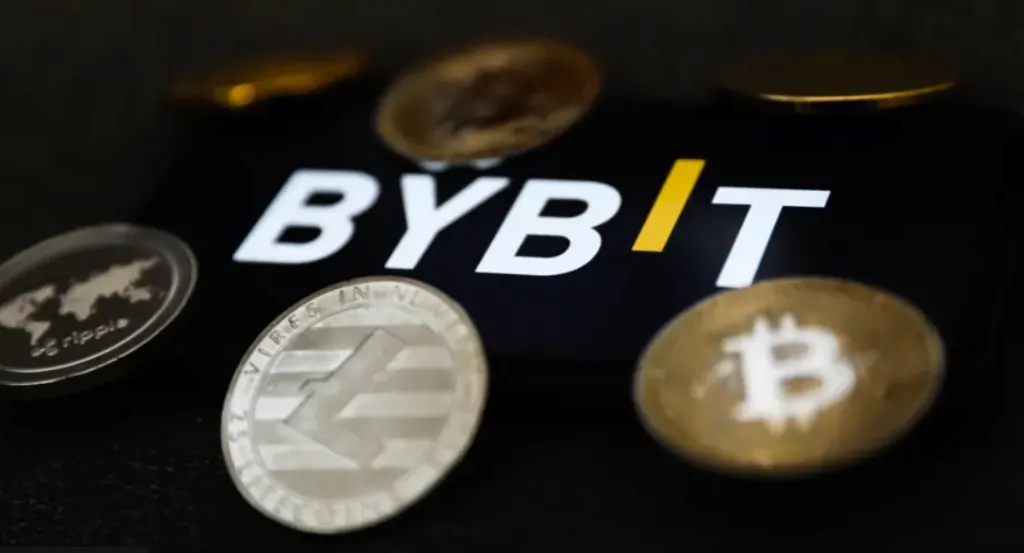
In an audacious and highly sophisticated cybercrime operation, hackers believed to be working under North Korea’s regime have successfully converted a significant portion of their record-breaking $1.5 billion cryptocurrency heist into cash. Investigations reveal that at least $300 million worth of stolen digital assets has already been laundered, despite global efforts to track and block the illicit funds.
The hacking group, widely known as Lazarus Group, executed the massive theft by infiltrating the crypto exchange ByBit two weeks ago. Since then, cybersecurity experts and blockchain investigators have been engaged in a relentless battle to prevent the stolen assets from being converted into fiat currency.
A Race Against Time
Forensics experts believe the Lazarus Group is operating around the clock, utilizing advanced techniques to obscure the flow of stolen funds. According to Dr. Tom Robinson, co-founder of blockchain analytics firm Elliptic, the group exhibits an exceptional level of expertise in laundering cryptocurrency.
“Every minute counts for them,” says Robinson. “They employ highly sophisticated methods to mask their activities, making it difficult to intercept the stolen funds.”
Reports indicate that the group has developed a near-mechanical approach to their operations, possibly working in shifts to ensure continuous movement of the assets. Their expertise in crypto laundering is considered unparalleled, making it increasingly challenging for authorities to track down the funds before they disappear into the dark corners of the financial world.
How the Heist Unfolded
The incident began on February 21, when Lazarus Group exploited a vulnerability in one of ByBit’s suppliers. They manipulated the system to reroute 401,000 Ethereum tokens—worth a fortune—into their own digital wallet. ByBit had intended to transfer the assets into its own secure reserves, but instead the funds landed in the hands of the attackers.
Despite the massive breach, ByBit CEO Ben Zhou reassured customers that their personal funds remained untouched. The exchange swiftly replenished the stolen assets through loans from investors, vowing to fight back against the perpetrators.
The Hunt for Stolen Crypto
ByBit has since launched an initiative to track and recover the stolen funds. The “Lazarus Bounty” program incentives blockchain enthusiasts and security experts to identify and freeze illicit transactions linked to the heist. So far, 20 individuals have collectively earned over $4 million in rewards for successfully flagging $40 million worth of stolen assets.
Cryptocurrency transactions are recorded on a public blockchain, making it possible to trace movements in real-time. If the hackers attempt to convert the funds through legitimate exchanges, those platforms can potentially freeze the assets—provided they cooperate with authorities.
However, not all crypto exchanges are equally willing to assist. One such platform, eXch, has been accused of enabling the laundering process by failing to block transactions linked to the heist. Investigators suggest that over $90 million has already been processed through eXch, raising concerns about the lack of industry-wide cooperation in combating cybercrime.
eXch’s owner, Johann Roberts, initially resisted efforts to halt the flow of stolen funds. He cited an ongoing dispute with ByBit as one reason for the delay. While he now claims to be cooperating, he remains critical of mainstream exchanges that identify users, arguing that such measures compromise the core principles of cryptocurrency privacy.
Cybercrime as State Policy?
The Lazarus Group has a long history of targeting financial institutions and cryptocurrency platforms to funnel funds into North Korea’s military and nuclear programs. Although Pyongyang has never officially admitted to sponsoring the group, cybersecurity experts and intelligence agencies believe the country is the only nation using cybercrime as a state-sanctioned revenue stream.
Over the past few years, North Korean hackers have been linked to several high-profile crypto thefts, including:
- The 2019 UpBit hack, which resulted in a $41 million loss
- A $275 million attack on KuCoin in 2020, though most funds were recovered
- The 2022 Ronin Bridge breach, which saw a staggering $600 million stolen
- The 2023 Atomic Wallet heist, which stripped users of approximately $100 million
Despite international sanctions and ongoing cyber crackdowns, North Korea continues to evolve its tactics, leveraging sophisticated laundering techniques that make tracking and recovering stolen assets increasingly difficult.

The Future of Cybersecurity in Crypto
This latest attack underscores a critical weakness in the cryptocurrency industry: the lack of universally enforced security and regulatory standards. While blockchain technology offers transparency, the decentralized nature of crypto makes it difficult to enforce strict anti-money laundering measures across all platforms.
Governments and cybersecurity firms are calling for stricter regulations, increased cooperation between exchanges, and improved tracking tools to counteract cyber threats. The United States has placed members of the Lazarus Group on its Cyber Most Wanted list, but the chances of apprehending these individuals remain slim unless they travel outside North Korea’s tightly controlled borders.
As digital finance continues to grow, the battle between cybercriminals and global security forces will only intensify. For now, the Lazarus Group’s latest heist serves as a stark reminder of the vulnerabilities in the crypto ecosystem and the urgent need for stronger safeguards against state-sponsored cybercrime.
Business
Can Tesla’s EVs Win Over India’s Price-Conscious Buyers?
Published
2 weeks agoon
March 5, 2025
After years of speculation, Tesla seems to be finally entering the Indian market. The American electric vehicle (EV) giant has started recruiting for several positions in Delhi and Mumbai, indicating a possible launch. Additionally, reports suggest that the company is actively seeking showroom spaces in these metropolitan hubs.
India, as Asia’s third-largest economy, presents a compelling growth opportunity for Tesla, especially as global EV sales decline and competition from Chinese manufacturers intensifies. However, a crucial question arises—can Tesla thrive in India’s highly price-sensitive automobile market?
Currently, Tata Motors dominates India’s EV sector with a commanding market share, followed by MG Motors, which is jointly owned by India’s JSW and a Chinese firm. Mahindra and Mahindra also hold a considerable portion of the market. The EVs manufactured by these companies are significantly more affordable than Tesla’s base model, which is estimated to cost around $40,000. As a result, Tesla will be perceived as a luxury brand, competing with premium EV models from Hyundai, BMW, and Mercedes.
From a sheer volume perspective, India may not be a substantial market for Tesla unless the company introduces a budget-friendly variant tailored specifically for Indian consumers. Price aside, the country’s road conditions present another potential hurdle. Tesla vehicles are designed with minimal ground clearance, making them less suitable for India’s diverse and often unpredictable roads. Re-engineering the existing models to suit Indian conditions would significantly increase production costs. Given the relatively small market potential, it remains uncertain whether Tesla would invest in such modifications.
Industry experts point out that making extensive design changes for a single developing market with limited sales volume may not be justifiable. High-end global manufacturers with smaller market shares have often faced similar challenges in India, limiting their growth potential.
Furthermore, despite the increasing popularity of EVs, they still represent a minor fraction of total passenger vehicle sales in India. The supporting infrastructure, such as charging stations, has been slow to develop, though efforts to improve accessibility have gained momentum. At present, there are approximately 25,000 charging stations across the country, which remains a modest number given the scale of India’s automobile sector.

India’s Policy Approach to Attract Tesla
Despite these challenges, the Indian government is actively working to attract Tesla and other global EV manufacturers. The country has set ambitious targets to electrify its transportation sector, aiming for a significant portion of private and commercial vehicles to transition to electric by 2030. Additionally, most state governments have introduced policies to promote EV adoption, offering incentives for both manufacturers and consumers.
India’s EV subsidies are among the highest in the world, with incentives covering nearly half the cost of the country’s top-selling electric vehicle. This has contributed to a surge in EV sales, which have grown exponentially over the past five years. India has also revised its import tax structure to encourage global carmakers to invest in local manufacturing.
Under the new policy, companies that commit to investing $500 million and start local production within three years can benefit from a significantly lower import duty of 15% on up to 8,000 vehicles. This move followed Tesla CEO Elon Musk’s concerns about India’s high import duties, which he claimed had hindered Tesla’s entry into the country. The revised tax policy aims to encourage international players to manufacture locally rather than merely exporting vehicles to India.
However, this approach has sparked concerns among domestic EV manufacturers. Industry experts warn that the investment requirements for foreign manufacturers are relatively modest compared to the capital required by Indian firms to compete in the same segment. Additionally, the 15% import duty on EVs is much lower than the tax imposed on comparable combustion engine vehicles, which face additional road taxes.
How Will Tesla Compete?
Domestic EV manufacturers remain largely unshaken by Tesla’s impending arrival. Companies like Mahindra and Mahindra believe that increased competition will ultimately strengthen the EV ecosystem in India. Many of these firms have addressed key concerns such as “range anxiety” by developing robust battery integration and conducting extensive real-world testing. Despite these improvements, Tesla continues to hold a competitive edge in battery performance, user interface, and technology, which could help differentiate its vehicles in the market.
Another factor that may work in Tesla’s favor is the rising demand for premium vehicles in India. As a globally recognized brand with a strong aspirational appeal, Tesla’s cars are expected to attract affluent buyers looking for status symbols. The company’s entry into India may initially focus on establishing showrooms in high-end locations rather than setting up large-scale manufacturing units.
However, Tesla has not yet made any concrete commitments to establishing a production facility in India. The timeline for such an investment will depend on multiple factors, including the expansion of India’s high-income consumer base and the finalization of trade agreements between India and the United States.
Former U.S. President Donald Trump has already expressed concerns over Tesla’s potential manufacturing plans in India, arguing that such a move could be detrimental to American interests. His “America First” policy stance could potentially influence Tesla’s long-term strategy regarding manufacturing investments in India.
For now, it appears that India will welcome Tesla’s sleek, high-end showrooms before seeing job-generating Tesla factories. The company’s initial focus will likely be on catering to the elite segment, and only time will tell if a more affordable, locally manufactured Tesla becomes a reality for the broader Indian market.
Business
Mixue Ice Cream and Tea: The Chinese Giant Surpassing Starbucks and McDonald’s
Published
2 weeks agoon
March 3, 2025
A new name is making waves in the global food and beverage industry, and it isn’t a household brand like McDonald’s or Starbucks. Meet Mixue Ice Cream and Tea, a Chinese company that has quietly expanded into a global powerhouse with more outlets than both of these renowned brands. The company, which specializes in affordable ice cream and beverages, recently made headlines when its stock price surged over 40% on its debut at the Hong Kong Stock Exchange, marking the biggest IPO of the year in the financial hub.
A Business Born from Humble Beginnings
Mixue’s journey began in 1997 when Zhang Hongchao, a university student in China, started a small cold drinks stall to support his family. His entrepreneurial endeavor soon took off, and a decade later, his younger brother, Zhang Hongfu, joined the business. Together, they transformed a simple drinks stall into a multinational beverage empire. Today, Mixue boasts more than 45,000 stores across China and 11 other countries, including markets like Singapore and Thailand.
The name “Mixue” comes from the full title Mìxuě Bīngchéng, which translates to “honey snow ice city.” With its Snow King mascot and catchy theme song playing on loop in its stores, Mixue has built a recognizable and engaging brand identity.
A Business Model That Works
Unlike Starbucks, which owns and operates a significant portion of its outlets, Mixue follows a different approach. Almost all of its stores operate on a franchise model, allowing the company to scale rapidly while keeping operational costs low. Instead of being just a retail brand, Mixue functions more like a raw materials supplier, providing franchisees with the necessary ingredients and supplies to maintain consistency across its thousands of locations.
This approach has enabled Mixue to keep its prices extremely low, with the average item on its menu costing just six Chinese yuan (approximately $0.82). This affordability has made it a favorite among consumers, particularly during challenging economic times in China, where many people are dealing with financial difficulties caused by a sluggish economy, property market crises, and weak consumer confidence.
Outpacing Global Giants
When it comes to the number of locations, Mixue has already outpaced major global brands. McDonald’s, which has a vast global presence, has over 43,000 outlets, while Starbucks operates around 40,576 stores worldwide. In comparison, Mixue has surpassed both, making it the largest bubble tea, iced drinks, and ice cream chain in China and beyond.
However, Mixue’s market expansion strategy is very different from that of its Western counterparts. While Starbucks focuses on maintaining premium pricing and an upscale café experience, Mixue prioritizes affordability and accessibility, catering to a wide range of customers who seek budget-friendly treats.
The Impact of Mixue’s IPO
On its first trading day in Hong Kong, Mixue’s shares skyrocketed by more than 40%, reflecting strong investor confidence in the brand. The IPO raised $444 million, making it the largest listing in Hong Kong so far this year.
This strong debut stands in contrast to the recent struggles of Mixue’s competitors. For example, smaller bubble tea chain Guming saw its stock price drop when it debuted on the market in February. Similarly, the owner of another popular bubble tea brand, Chabaidao, also faced losses upon its market listing last year. In contrast, Mixue’s overwhelming success highlights its dominance in the industry and the strength of its business model.

The Future of Mixue
Despite its massive success, Mixue is not slowing down. The company has ambitious expansion plans and intends to grow its presence in more international markets. With its cost-efficient business strategy and strong brand recognition, it is well-positioned to continue its upward trajectory.
The Zhang brothers, the minds behind Mixue’s rise, have now become wealthier than some of the biggest names in the global food and beverage industry. Their ability to transform a small cold drink stall into a billion-dollar enterprise is a testament to their vision and business acumen.
As Mixue continues its expansion, it raises an important question: Will this Chinese giant become a truly global household name, much like Starbucks and McDonald’s? Only time will tell, but for now, its success story is one worth watching.
Business
Tesla’s European Struggles: Declining Sales and the Musk Factor
Published
3 weeks agoon
February 26, 2025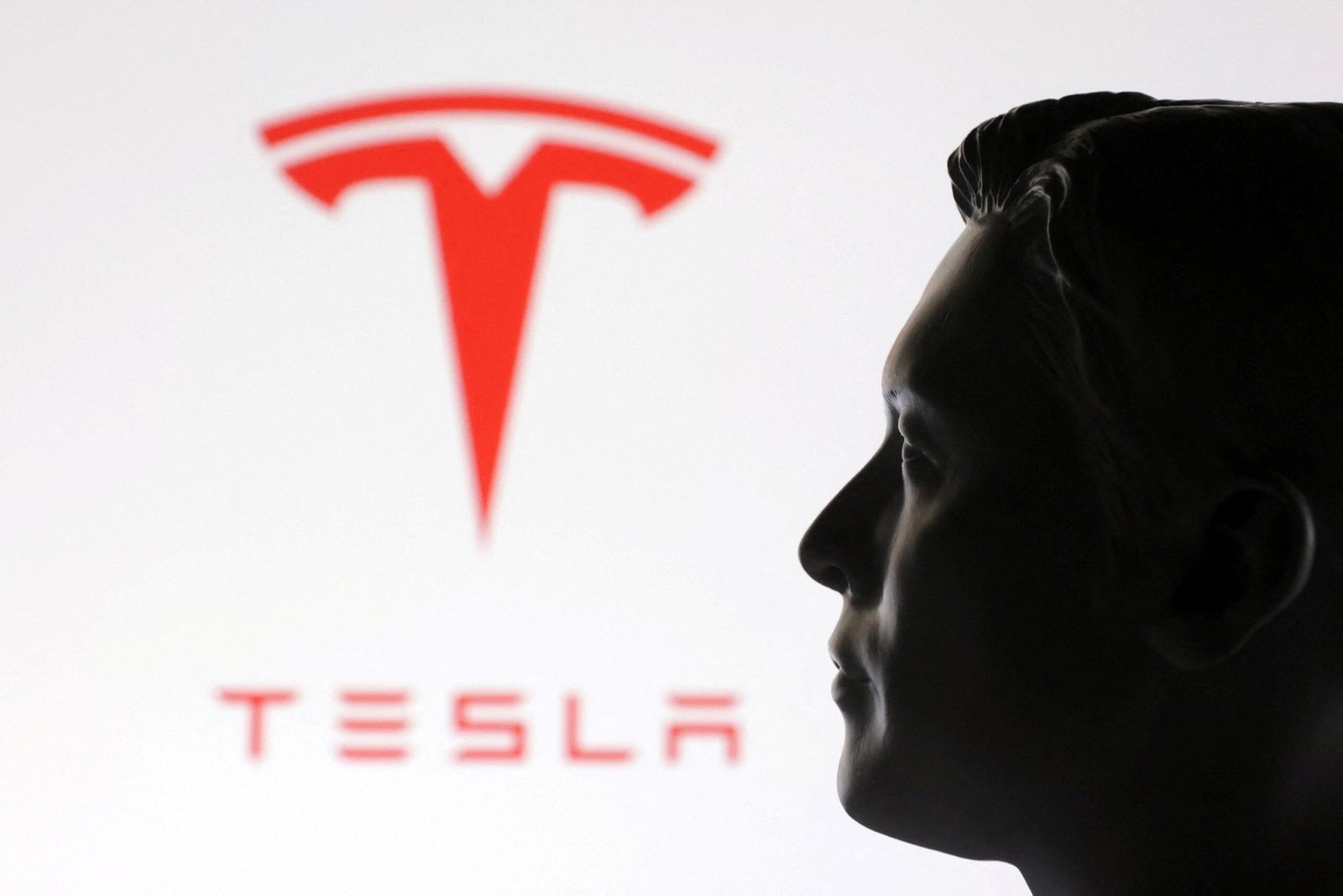
Tesla, the electric vehicle giant, is facing significant challenges in the European market, with sales experiencing a sharp decline in January. Reports indicate that Tesla’s vehicle sales across the European Union (EU), the European Free Trade Association (EFTA), and the United Kingdom (UK) plummeted by more than 45% compared to the same period last year. This downturn contrasts with the overall growth in electric vehicle sales in the region, which saw an increase of over a third during the same timeframe.
The drop in sales has had a direct impact on Tesla’s stock value. Shares of the company fell by over 9%, pushing its market capitalization below the $1 trillion mark for the first time since November 2024. Investors are now grappling with concerns over Tesla’s declining European performance and CEO Elon Musk’s growing involvement in political affairs, which some analysts believe is contributing to the company’s recent setbacks.
Competition Heats Up in Europe
One of the primary factors behind Tesla’s declining sales in Europe is the increasing competition from other electric vehicle manufacturers, particularly from China. Chinese automaker BYD has been expanding its footprint in the region, offering competitive pricing and additional features as standard, which often come at an extra cost for Tesla customers. The rise of affordable alternatives, combined with an evolving consumer preference for different brands, has intensified the pressure on Tesla’s European sales.
Tesla’s sales slump also follows a difficult year for the company in 2024 when, for the first time in over a decade, it recorded an overall decline in sales. This downward trend raises concerns about the company’s ability to maintain its dominance in an increasingly crowded and competitive market.
Musk’s Political Controversies: A Growing Concern?
Elon Musk’s outspoken political stance has added another layer of complexity to Tesla’s struggles. His support for controversial political figures and policies has sparked criticism and could be alienating a portion of Tesla’s customer base. In the United States, Musk has taken on a significant advisory role in President Donald Trump’s administration, particularly in efforts to reduce government spending. Meanwhile, in Europe, he has publicly expressed support for far-right political parties, including Germany’s Alternative for Germany (AfD) party, which recently secured a record election result.
Analysts suggest that Musk’s political leanings might be influencing consumer sentiment, leading some potential buyers to seek alternative electric vehicle brands. While Musk’s influence in the U.S. political landscape has been seen as a potential advantage by investors, it appears to be having the opposite effect in Europe, where his affiliations may be deterring customers.
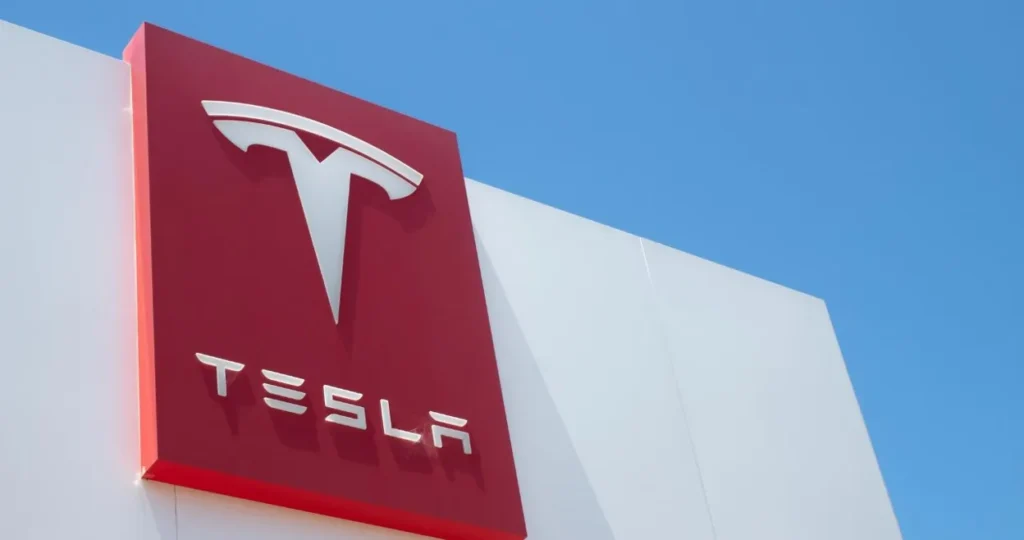
Market Reaction and Investor Concerns
Following the release of Tesla’s weak European sales figures, the company’s shares experienced a sharp decline, closing at $302.80—a drop of 8.4% in a single session. This loss wiped out approximately $89 billion from Tesla’s market value. Musk’s own net worth also took a hit, falling by nearly $15 billion in a day.
Market analysts have expressed mixed reactions to Tesla’s recent performance. While some believe the downturn is primarily a result of heightened competition and slowing demand, others argue that Musk’s political entanglements are exacerbating the situation. Wedbush Securities analyst Dan Ives estimates that political factors account for about 10-15% of Tesla’s current challenges in Europe.
Adding to the uncertainty, broader market conditions have also played a role in Tesla’s stock struggles. The tech-heavy Nasdaq index has seen fluctuations, and investors remain cautious about the potential impact of interest rate changes and trade policies. Additionally, concerns about Trump’s stance on electric vehicles, including his plans to roll back efforts to promote their adoption, have added to investor anxiety.
What Lies Ahead for Tesla?
Despite these challenges, Tesla remains a dominant force in the electric vehicle industry. The company continues to innovate, recently announcing plans to introduce advanced self-driving technology in China—another critical market where competition is fierce. However, to regain momentum in Europe, Tesla may need to reassess its market strategy, including pricing, feature offerings, and brand positioning.
Musk’s growing political involvement also raises questions about how Tesla will navigate public perception moving forward. If his affiliations continue to generate controversy, the company may need to find ways to separate its brand identity from Musk’s personal views to maintain a broad customer base.
For now, Tesla finds itself at a crossroads. With sales declining in Europe and its stock under pressure, the company must address both market competition and reputational concerns to sustain long-term growth. Investors and consumers alike will be closely watching Tesla’s next moves to see whether it can overcome these obstacles and reclaim its position as a leader in the global electric vehicle market.
Business
Starbucks’ Bold Menu Shake-Up: A Return to Simplicity and Efficiency
Published
3 weeks agoon
February 25, 2025
For years, Starbucks has been known for its expansive and customisable menu, offering everything from classic espresso drinks to elaborate Frappuccinos. However, change is brewing at the coffee giant. In a bid to enhance efficiency and reignite customer satisfaction, Starbucks is embarking on a major overhaul, cutting down its menu offerings and streamlining operations.
The restructuring is part of the company’s broader “Back to Starbucks” initiative, a strategic move aimed at focusing on core products, reducing wait times, and improving overall service quality. On March 4, the company will officially retire 13 drinks, including the Royal English Breakfast Latte, White Hot Chocolate, and several variations of blended Frappuccinos. According to Starbucks, these drinks were either infrequently ordered, challenging to prepare, or closely resembled existing beverages on the menu.
A Return to Its Roots
The decision to trim the menu aligns with CEO Brian Niccol’s vision of bringing Starbucks back to its foundational identity as a premier coffeehouse. Niccol, who previously led Chipotle, stepped into his role at Starbucks last year with the objective of revitalising the brand. He quickly identified an overcomplicated menu as a hurdle to customer experience and operational efficiency. By simplifying its offerings, Starbucks hopes to create a more seamless and enjoyable experience for customers while easing the workload for baristas.
“By focusing on fewer, more popular items, we aim to execute with excellence,” a Starbucks spokesperson said. “This will create space for future innovation, reduce wait times, and improve quality and consistency.”
The Drinks Getting the Cut
While some customers may be disappointed to see their favourite beverages disappear, Starbucks is offering alternatives that closely resemble the eliminated drinks. Here’s a look at some of the items being phased out and their recommended replacements:
- Iced Matcha Lemonade → Try the Green Tea Lemonade for a similar citrussy taste.
- Espresso Frappuccino, Caffè Vanilla Frappuccino → The Coffee Frappuccino remains an option and can be customised.
- White Chocolate Mocha Frappuccino → Mocha Frappuccino is a recommended alternative.
- Java Chip Frappuccino → Mocha Cookie Crumble Frappuccino offers a comparable experience.
- Chai Crème Frappuccino, Caramel Ribbon Crunch Crème Frappuccino, and others → Vanilla Bean Frappuccino can be modified to match these flavours.
- White Hot Chocolate → Standard Hot Chocolate with Mocha or White Chocolate Mocha sauce is suggested.
- Royal English Breakfast Latte → London Fog Latte is a suitable substitute.
- Honey Almondmilk Flat White → The classic Flat White remains on the menu and can be customised with nondairy milk.
A Shift from Customization to Efficiency
One of the hallmarks of Starbucks’ appeal has been its customisation options, allowing customers to tweak their drinks to their liking. However, the company is now scaling back some modifications available through its app and website. This move is intended to streamline ordering and ensure that baristas can prepare drinks more efficiently, reducing customer wait times and enhancing service speed.
Niccol’s strategy extends beyond the menu reduction. Several other policy changes have been implemented since he took the helm, including limits on digital orders, a return of condiment bars, the reintroduction of free refills, and even a shift back to traditional Sharpie-written names on cups. These changes signify Starbucks’ effort to reconnect with its core values and provide an enhanced in-store experience for customers.
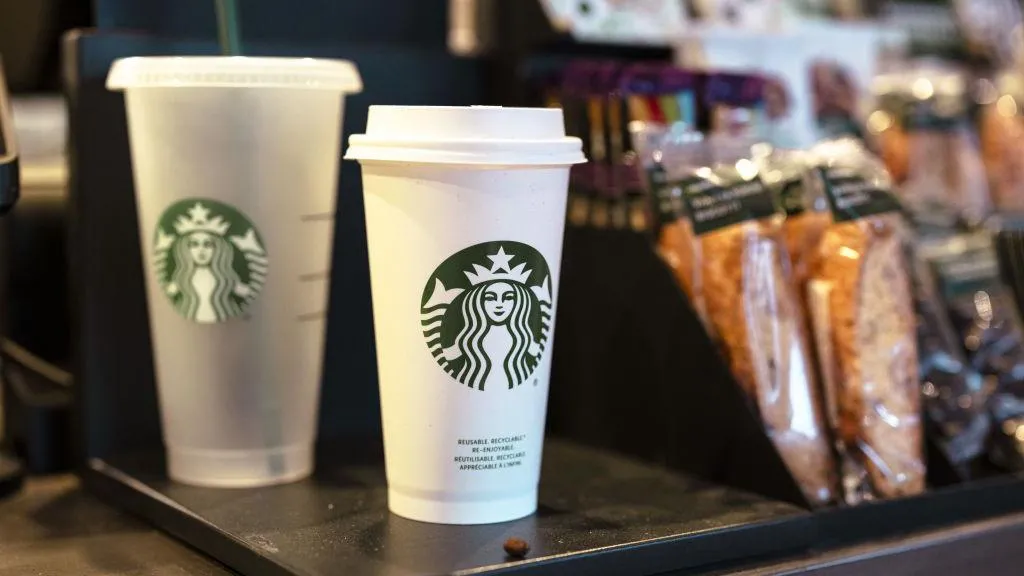
Corporate Job Cuts Amid Market Challenges
Alongside its menu overhaul, Starbucks has announced the elimination of 1,100 corporate jobs, primarily affecting support partner roles. The company has assured that these job cuts will not impact store employees or investments in its physical locations. The restructuring aims to streamline corporate functions, increase accountability, and foster better integration across the company.
Starbucks’ decision to revamp its operations comes at a critical time. The brand has faced declining sales, with transactions at U.S. stores open for over a year dropping significantly in the last quarter. Additionally, the company has had to navigate challenges such as rising operational costs, unionisation efforts among baristas, and public scrutiny over social and political issues, including debates surrounding the Israel-Gaza conflict.
Looking Ahead: What’s Next for Starbucks?
Despite these hurdles, Starbucks remains committed to long-term growth. By late 2025, the company plans to cut nearly 30% of its food and drink options, making room for new innovations that align with its renewed focus on quality coffee and streamlined service.
The coming months will reveal whether this strategy succeeds in reinvigorating Starbucks’ brand and customer loyalty. For now, regulars may want to check their favourite drinks before their next visit—some of them may not be around much longer.
Business
How superWisely is Revolutionizing Peer Tutoring for Immigrant and Multilingual Students
Published
4 weeks agoon
February 21, 2025
In a world where educational equity remains a challenge, superWisely, founded by Ariel Ganelis in 2020, is transforming how immigrant and multilingual students access learning resources, mentorship, and career guidance. superWisely’s launch marked a new era in innovative education, driven by Ariel Ganelis’ vision to create accessible learning pathways for immigrant students. Ariel transformed his initiative into a recognized nonprofit that provides career counseling and culturally tailored tutoring. superWisely’s student-mentor matching system considers cultural and linguistic factors to pair students effectively. This dual-purpose approach not only promotes cultural appreciation and belonging but also strengthens student connections and enhances learning outcomes.
The Birth of superWisely: A Passion for Education and Inclusion
Ariel Ganelis founded superWisely during the pandemic when school closures highlighted deep educational inequities. While some schools adapted smoothly to online learning, many immigrant families struggled. Their children faced language barriers and lacked academic support at home. Through his dedicated learning style, Ariel Ganelis understood that teaching other students through Zoom sessions would create meaningful changes.
“Growing up in a family of immigrants, I was influenced by stories of finding strength, of diverse cultures, of ideas and ideals to create and achieve…. uplifting fellow students from immigrant families is very close to my heart,” Ariel Ganelis said.
The program started with two students, Noah and Daniella. After his first two students, Ganelis knew he had found his talent and his passion. “It was so rewarding to see Noah putting together words in a sentence, and Daniella learning reading proficiency in her new favorite science subjects,” he said.
Seeing the impact of one-on-one tutoring, Ganelis formalized the initiative. He soon began to notice an increase in requests asking for peer tutors with particular language and cultural backgrounds. SuperWisely grew beyond tutoring by responding to increasing parent and immigrant family demands, thus broadening its offerings into mentorship services as well as career counseling and multi-language educational platform development. The project has transformed into an educational program that links students through both time differences and cultural backgrounds to provide learning assistance to young children across the nation.
“Our mission is to create a worldwide, community-driven, inclusive environment where students can build meaningful connections, celebrate cultural diversity, and drive innovative change,” wrote Ganelis.
What Sets superWisely Apart?
- superWisely stands out as an innovative educational platform by implementing unique methods tailored to immigrant students.
- Learning reaches its full potential when tutors are matched with students of similar cultural and language backgrounds that improve communication between families and students.
- The initiative encourages former students to become tutors, fostering a cycle of mentorship and leadership within the community.
- superWisely offers students personalized career guidance by connecting them with multilingual professionals in STEM, business, law, and healthcare.
- The organization conscientiously uses Generative AI technology to create teaching materials, including customized educational content that comes with quizzes and multilingual resources for individualized learning.
- The organization has received official status as an educational resource from Los Angeles County and it works together with UNICEF to spread awareness about education rights as a fundamental human right.
Addressing Challenges in Multicultural Education
Ariel Ganelis started superWisely because his immigrant heritage led him to help fellow students with similar experiences. When superWisely started, it had to overcome barriers ranging from language issues to complex class schedules and educational difficulties at a high level. By integrating bilingual mentors, certified teachers, and professional advisors, the organization built a sustainable model that supports students worldwide.
superWisely’s educational hub provides a database of resources for new immigrants, guidance on the U.S. education system, and multilingual support materials in Spanish, Russian, and Ukrainian. Ganelis is working on expanding this list of languages today.
A Growing Legacy of Empowerment
Ariel Ganelis firmly believes in the transformative power of education. Through superWisely, Ganelis has helped over 600 students overcome language barriers, build confidence, and achieve academic success. Additional volunteers as well as new language programs alongside strategic partnerships enable the organization to impact more people as it continues its expansion.
Ariel Ganelis, who finds inspiration from Socrates, states, “The power of the community arises from collective members and individual power develops within community members.” superWisely has a greater force than simply a tutoring program. It’s an educational movement of the community committed to equal learning opportunities for all students while uplifting the immigrant community.
Next, Ganelis says he plans to expand superWisely’s global outreach to create a worldwide network of culturally informed peer-led education. He is also passionate about increasing the number of students who go from tutee to tutor, to create a self-sustaining cycle of leadership and empowerment.
Visit superWisely.com to understand this organization and view the results they achieve when empowering students through tutoring and mentoring programs and career mentorship.
Reviews are available for viewing on Great Nonprofits. superWisely partnership establishes educational inclusion that benefits every student.
Business
Bain Capital Acquires Mitsubishi Tanabe Pharma in $3.4 Billion Deal to Boost Japan’s Life Sciences Sector
Published
1 month agoon
February 7, 2025
Bain Capital has announced the acquisition of Mitsubishi Tanabe Pharma, a renowned Japanese pharmaceutical company, in a deal valued at 510 billion yen (approximately $3.4 billion). The decision by Bain Capital to invest in Mitsubishi Tanabe comes as Japan’s regulatory environment shifts, presenting new growth opportunities in the country’s life sciences sector.
Mitsubishi Tanabe Pharma, headquartered in Osaka, has a well-established presence in the pharmaceutical industry with a diverse pipeline of drugs targeting central nervous system disorders, immuno-inflammation, and oncology. With operations spanning across multiple continents, the company has been actively engaged in developing innovative treatments for various medical conditions.
Ricky Sun, a partner at Bain Capital, emphasised the potential of Japan’s pharmaceutical industry, highlighting that the government and regulatory bodies have been implementing reforms to expedite the approval process for new drugs. Historically, Japan has lagged in approving certain drugs that have been available in the United States and Europe, particularly those for rare diseases and paediatric conditions. These regulatory shifts signal a favourable environment for investments in Japan’s healthcare sector.
The acquisition is being facilitated through Bain Capital’s Asia private equity fund, with additional contributions from its global life sciences fund. According to sources familiar with the transaction, the move aligns with Bain’s strategy to invest in companies poised for growth in the healthcare industry.
Mitsubishi Chemical, the parent company of Mitsubishi Tanabe, decided to divest its pharmaceutical arm due to the high costs associated with research and development. Mitsubishi Chemical acknowledged that it was not in a position to provide the significant financial investment required to enhance Mitsubishi Tanabe’s R&D capabilities. As a result, the sale enables the company to focus on its core chemicals business while using the proceeds to reduce debt and enhance shareholder returns.

Over the past financial year, Mitsubishi Tanabe’s core operating income dropped significantly, experiencing a 61% decline to 56.2 billion yen ($370 million). This downturn highlighted the need for substantial investment to revitalise its operations and advance its pharmaceutical research.
Japan’s corporate landscape has seen a rise in private equity-led buyouts, with firms increasingly selling off non-core businesses in response to mounting pressure from regulators to boost corporate and shareholder value. This trend has driven a surge in foreign investments, with Bain Capital and other international firms ramping up their acquisitions. Notably, Japan ranked as the leading destination for inbound mergers and acquisitions in Asia in 2024, a position it had not held since 1999.
The acquisition of Mitsubishi Tanabe is a significant step for Bain Capital, positioning the private equity firm as a key player in Japan’s evolving healthcare sector. The firm recognises the potential of “precision medicine,” an approach that Mitsubishi Tanabe has been utilising to develop treatments for diseases such as diabetes and cancer. The pharmaceutical company, which traces its roots back to 1678, employs over 5,000 people worldwide and has built a reputation for its expertise in drug development.
Bain Capital’s investment in Mitsubishi Tanabe underscores its long-term commitment to advancing pharmaceutical research. Ricky Sun reiterated that the firm aims to support the development of innovative treatments addressing unmet medical needs, ultimately benefiting patients in Japan and across the globe. This strategic acquisition aligns with Bain’s broader vision of fostering growth in the life sciences industry through targeted investments in high-potential companies.
Mitsubishi Tanabe’s future under Bain Capital is expected to focus on bolstering its research and development efforts, particularly in areas with substantial unmet medical needs. The investment is set to enhance the company’s capabilities in developing groundbreaking therapies that could transform treatment options for patients worldwide.
This acquisition also comes at a time when Japan is striving to strengthen its pharmaceutical industry by streamlining regulatory approval processes and encouraging innovation. As the global population ages and the demand for advanced medical treatments rises, Japan’s healthcare market presents a promising landscape for investment.
For Bain Capital, the acquisition of Mitsubishi Tanabe Pharma marks another milestone in its expansion within the healthcare sector. With a focus on fostering long-term growth and innovation, the private equity firm is poised to play a significant role in shaping the future of Japan’s pharmaceutical industry. As regulatory changes continue to open new doors for drug development and approvals, Bain’s strategic move positions it to capitalise on emerging opportunities in the market.
In conclusion, Bain Capital’s $3.4 billion acquisition of Mitsubishi Tanabe Pharma represents a major development in Japan’s pharmaceutical landscape. With regulatory reforms paving the way for accelerated drug approvals, the investment is expected to unlock new growth avenues for Mitsubishi Tanabe. As Bain Capital strengthens its footprint in the life sciences sector, this acquisition underscores the increasing appeal of Japan’s healthcare market to global investors. The deal not only benefits Mitsubishi Tanabe by providing the necessary resources for expansion but also contributes to the broader goal of advancing innovative medicine for patients worldwide.
Business
Australia’s Luxury Retail Surge: A Post-Pandemic Boom
Published
1 month agoon
February 4, 2025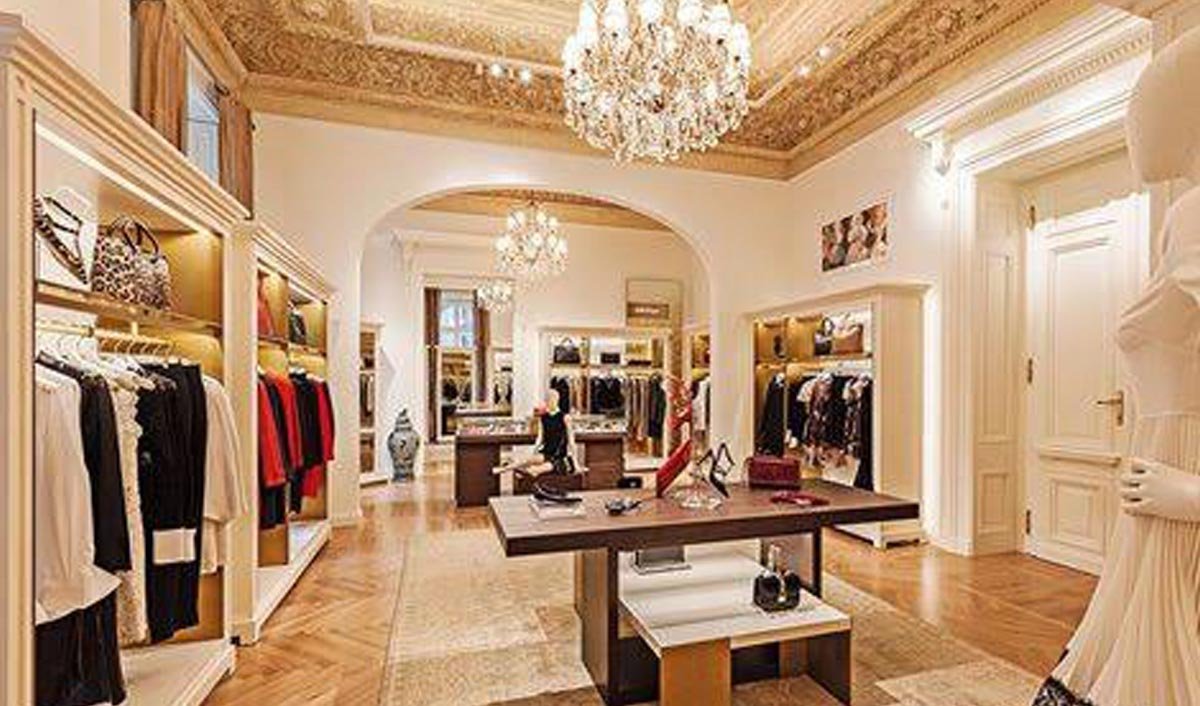
Australia has emerged as a global leader in pandemic response, and its retail landscape is now reaping the benefits. While other nations struggle with economic recovery, Australia’s retail sector is experiencing an impressive resurgence, particularly in luxury fashion. High-end brands are capitalising on this momentum by expanding their physical presence across the country.
Despite intermittent lockdowns, consumer confidence in Australia has soared. April saw the highest consumer sentiment levels since 2010, reflecting strong household disposable incomes and a positive economic outlook. Although Australia’s luxury market remains relatively small on a global scale, it has benefitted from the country’s robust commodities sector and its reputation as a sought-after destination for Chinese tourists. Despite strict travel restrictions, luxury sales are projected to grow steadily, reaching AU$4.5 billion by 2026, according to IbisWorld. With limited digital penetration, luxury brands in Australia are bucking global trends by investing heavily in brick-and-mortar retail spaces.
The Rise of Luxury Retail Expansion
The past few years have seen an influx of luxury brand openings across Australia. Retail expert Alex Alamsyah of Knight Frank reports that around 25 luxury projects have launched or are set to open in Sydney’s central business district between 2019 and 2022. Major global brands such as Hermès, Saint Laurent, Gucci, and Rolex have established flagship stores in key Australian cities, while local names like Incu and Camilla & Marc are also expanding their footprints.
Upcoming luxury openings include Balenciaga in Brisbane, Mulberry and Ralph Lauren Collection in Victoria’s Chadstone, and several flagship stores for Bally, Chanel, Dolce & Gabbana, and Valentino in Sydney. The increased investment underscores Australia’s growing reputation as a viable and lucrative luxury market.
Australia’s Luxury Market: A Safe Haven
With global markets facing economic instability, luxury brands view Australia as a promising alternative. Brian Wu, owner of multi-brand boutique Incu, notes that many international brands are increasingly interested in the Australian market, seeing it as a stable and thriving sector. Incu itself has launched multiple stores during the pandemic, reaffirming confidence in the local retail landscape.
Australian consumers are embracing this resurgence with enthusiasm. Research by Net-a-Porter suggests that Australians are more inclined than their global counterparts to anticipate and spend on events such as cocktail parties and sporting functions. Cartier’s managing director for Australia & New Zealand, Alban du Mesnil, highlights that consumers are gravitating towards timeless investment pieces rather than trend-driven items. This shift in purchasing behaviour is reflected in increased demand for classic jewellery collections such as Cartier’s Love and Panthère lines, as well as seasonless fashion items like Saint Laurent blazers and The Row’s wide-leg trousers.
Domestic Spending Driving Growth
The absence of international tourists, particularly Chinese travellers who typically contribute AU$12 billion annually to the Australian economy, has reshaped the luxury retail landscape. While foot traffic in luxury shopping centres has declined, average spending per customer has surged by 23% compared to 2019, according to Chadstone Shopping Centre’s head of marketing, Amy Wotton. Australian consumers who once splurged on overseas shopping trips are now redirecting their disposable income into domestic retail.
Retailers are leveraging this shift by focusing on deepening connections with local clientele. Wu emphasises that businesses that effectively engage with Australian consumers will retain their loyalty even after international travel resumes. Hiromi Yu, owner of luxury retailer Marais, echoes this sentiment, prioritising the needs of the domestic market while viewing international sales as an added advantage.
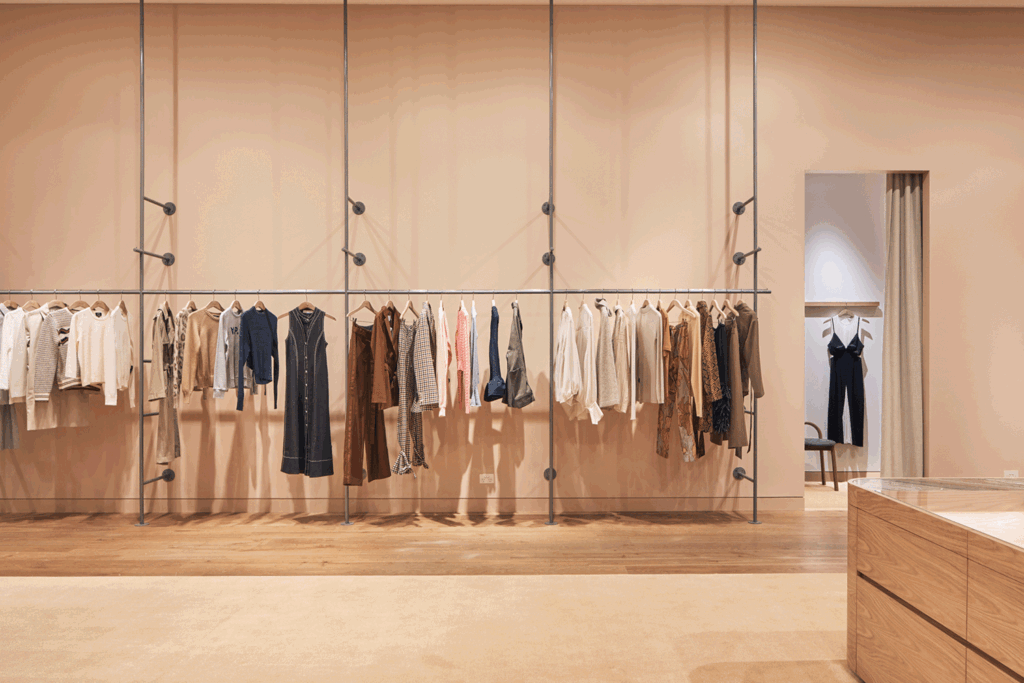
The Future of Luxury Retail in Australia
The opportunity for further growth extends beyond physical retail. Australia lags behind other developed nations in e-commerce penetration, making digital expansion a key area of potential investment. Non-food e-commerce accounted for only 14.1% of total retail spending in March 2021, far behind the UK’s 32.4% during the same period. Recognising this gap, retailers like Marais and Incu are ramping up their online presence while maintaining a strong focus on delivering a premium in-store experience.
However, physical retail remains central to luxury sales. Wu highlights the importance of immersive shopping experiences, stating that special concept areas within stores help consumers better connect with brands. By providing engaging and theatrical in-store experiences, retailers can foster brand loyalty and drive foot traffic.
Expanding Luxury Beyond Sydney and Melbourne
Traditionally, Sydney and Melbourne have been the epicentres of Australia’s luxury market. However, shifting demographics are prompting brands to explore opportunities in Brisbane, Perth, and Adelaide. With population growth in these cities and increasing disposable incomes, luxury brands are finding untapped potential beyond Australia’s largest metropolitan centres.
Brisbane, in particular, has emerged as a key destination for luxury expansion. Louis Vuitton, Tiffany, and Dior have all opened flagship stores in the city, reflecting its growing affluence. Meanwhile, Perth is benefiting from a mining-driven economic boom, attracting luxury names such as Cartier and Van Cleef & Arpels.
Australia’s luxury retail sector is undergoing a remarkable transformation. The combination of strong domestic consumer confidence, an evolving retail landscape, and increasing investments in both physical and digital stores is positioning Australia as a critical market for luxury brands. While challenges remain, such as adapting to reversed seasonal trends and navigating e-commerce limitations, the overall outlook is positive. As brands continue to expand their presence and cater to a burgeoning local consumer base, Australia’s luxury retail scene is poised for long-term success.
Business
Glenn Martens Appointed as Maison Margiela’s New Creative Director
Published
2 months agoon
January 29, 2025
Belgian designer Glenn Martens has officially been named the new creative director of Maison Margiela, marking a significant shift in the trajectory of the iconic luxury fashion house. This appointment, which follows the departure of John Galliano, ushers in a new era for the brand, known for its avant-garde approach to design, its commitment to deconstructionist aesthetics, and its ability to blur the lines between art and fashion. Martens, renowned for his innovative take on fashion, has consistently impressed the industry with his ability to combine experimental silhouettes with commercial appeal, creating collections that feel both fresh and accessible. His vision and creative direction are seen as a natural next step for a house that has always valued pushing boundaries while maintaining an unmistakable identity.
Martens’ appointment is expected to breathe new life into the storied Maison Margiela legacy, which has been shaped by several legendary designers over the years. This includes Martin Margiela, whose eponymous brand redefined fashion in the late 1980s with its minimalist yet subversive approach, and John Galliano, who transformed the house into one of the most cutting-edge couture labels of the 21st century. Stepping into the role left by Galliano, who had a transformative impact on the house, Martens is expected to honour its avant-garde heritage while steering it toward exciting new horizons. With his extensive experience in both high fashion and commercial luxury, Martens is poised to bring a unique blend of creativity and strategic thinking that will resonate with both fashion insiders and a broader audience.
OTB Chairman Renzo Rosso Expresses Confidence in Martens
Renzo Rosso, the chairman of OTB Group, which owns Maison Margiela, expressed his confidence in Martens’ ability to lead the brand into its next chapter. Rosso praised Martens for his remarkable talent and vision, drawing a parallel between the new creative director and the brand’s founder, Martin Margiela. Rosso emphasised that Martens possesses the same level of artistry and dedication that Margiela had when creating the house. He believes that Martens, like Margiela before him, will continue to honour the house’s deeply rooted legacy while pushing its boundaries and exploring new territories in both fashion and design. In Rosso’s eyes, Martens is more than just a designer—he is a curator who understands the artistry behind fashion, making him the ideal candidate to lead the house into the future.
A Strong Background in Couture and Fashion Innovation
Martens’ career trajectory showcases his deep expertise in couture and his ability to innovate in the fashion world. A graduate of the Royal Academy of Fine Arts in Antwerp, Martens honed his skills under the mentorship of some of the industry’s leading figures, including the legendary Jean Paul Gaultier. His tenure at Y/Project, where he served as creative director for over a decade, was marked by groundbreaking collections that earned critical acclaim and cemented his reputation as a master of both design and conceptual fashion. His work at Y/Project demonstrated his ability to take risks and push the boundaries of traditional fashion, blending avant-garde concepts with accessible, wearable designs. His experience at the helm of such an influential brand makes Martens exceptionally well-suited to take on the creative leadership of Maison Margiela, a brand known for its intellectual approach to fashion.
Revitalizing Diesel: Martens’ Success in Commercial Fashion
Since taking over as creative director at Diesel in 2020, Martens has demonstrated a remarkable ability to reinvigorate the brand and elevate its commercial appeal. Under his leadership, Diesel has seen a significant increase in sales, particularly among Gen Z consumers, who have become a key demographic for the brand. His strategic vision and ability to blend creativity with commercial success have allowed Diesel to reassert itself as a global fashion powerhouse. Martens’ work at Diesel, which includes the successful launch of new product lines and the reinvention of classic Diesel designs, showcases his ability to navigate both the commercial and creative aspects of fashion. This combination of commercial success and creative brilliance made him a top contender for the role at Maison Margiela, a brand that, while firmly rooted in high fashion, also recognises the importance of maintaining a connection to its broader customer base.

Industry Speculation Turns Into Reality
Speculation about Martens’ appointment began circulating after his departure from Y/Project in September 2024. The rumours were further fuelled by comments from Renzo Rosso, who spoke highly of Martens in a recent interview, hinting that the Belgian designer could be the next leader of Maison Margiela. In this interview, Rosso described Martens as “a couturier, not just a designer,” underscoring his belief that Martens has the rare ability to create fashion with true artistic depth. As the rumours continued to swirl, it became increasingly clear that Martens was a perfect fit for the role, with his unique blend of technical expertise and innovative thinking positioning him as a natural successor to Galliano.
Martens Shares His Excitement for the New Role
Upon accepting the role, Martens expressed his gratitude for the opportunity to lead such a prestigious brand. He acknowledged the significant legacy of Maison Margiela, which has inspired designers and artists alike for decades. In a statement, Martens shared his excitement about the challenges and creative possibilities that lie ahead, emphasising that his vision for the brand aligns with the house’s avant-garde spirit. His appointment is seen as a seamless continuation of Margiela’s forward-thinking ethos, and Martens has made it clear that he intends to honour the house’s legacy while pushing its creative boundaries even further.
Maison Margiela’s Legacy and Galliano’s Impact
John Galliano’s tenure at Maison Margiela marked a pivotal moment in the brand’s history. Under Galliano’s direction, Margiela evolved from a radical, minimalist label into one of the most influential couture houses of the 21st century. Galliano’s ability to merge theatricality with the house’s core commitment to craftsmanship transformed the brand, earning it both critical and commercial success. His Margiela Artisanal collections, particularly the Spring 2024 show, garnered worldwide attention and solidified Galliano’s reputation as one of the most visionary designers of his generation. As Martens steps into Galliano’s shoes, he faces the challenge of maintaining the momentum that Galliano built while introducing his own unique perspective to the house.
The Parallels Between Martens and Martin Margiela
The parallels between Martens and the brand’s enigmatic founder, Martin Margiela, are striking. Both men share Belgian roots and graduated from Antwerp’s Royal Academy of Fine Arts, where they developed a shared appreciation for deconstructivist fashion. Furthermore, both Martens and Margiela began their careers working for Jean Paul Gaultier—Martens in 2008 and Margiela in 1984. However, where Margiela embraced a reclusive lifestyle, shunning publicity and refusing to take a bow at his shows, Martens has taken a more public approach to discussing his work. This contrast in public personas, while notable, is indicative of the ways in which Martens is poised to evolve the house while respecting the core principles that have made it so influential.
Martens’ Proven Excellence in Couture
Martens’ success is not confined to commercial fashion alone. His guest designer role at Jean Paul Gaultier Couture for Spring/Summer 2022 showcased his ability to craft haute couture collections that are both innovative and technically superb. This experience, combined with his extensive background in ready-to-wear, makes Martens a perfect fit for the Maison Margiela Artisanal collections, which have become a hallmark of high-fashion craftsmanship. His appointment as creative director signals a commitment to continuing the house’s tradition of avant-garde couture while introducing fresh, innovative elements.
A New Era for Maison Margiela Begins
As Glenn Martens assumes the role of creative director, the fashion world eagerly awaits his first collection for Maison Margiela. His appointment signals the beginning of a new era for the brand, one that blends innovation with the rich legacy of avant-garde fashion. With his deep understanding of both couture and commercial fashion, Martens is well-positioned to create collections that challenge conventions and push the boundaries of what fashion can represent. As Martens prepares to take the reins, the industry anticipates that he will continue to elevate Maison Margiela’s reputation as one of the most forward-thinking and exciting houses in luxury fashion.
Trending
-

 Health4 years ago
Health4 years agoEva Savagiou Finally Breaks Her Silence About Online Bullying On TikTok
-

 Health3 years ago
Health3 years agoTraumatone Returns With A New EP – Hereafter
-

 Health3 years ago
Health3 years agoTop 5 Influencers Accounts To Watch In 2022
-

 Fashion4 years ago
Fashion4 years agoNatalie Schramboeck – Influencing People Through A Cultural Touch
-

 Fashion4 years ago
Fashion4 years agoThe Tattoo Heretic: Kirby van Beek’s Idea Of Shadow And Bone
-

 Fashion8 years ago
Fashion8 years ago9 Celebrities who have spoken out about being photoshopped
-

 Health4 years ago
Health4 years agoTop 12 Rising Artists To Watch In 2021
-

 Tech2 years ago
Tech2 years agoGoogle Developer Conference to Unveil Latest AI Updates, Including PaLM 2 Language Model
-

 Health4 years ago
Health4 years agoBrooke Casey Inspiring People Through Her Message With Music
-

 Health3 years ago
Health3 years agoTop 10 Influencers To Follow This 2021
